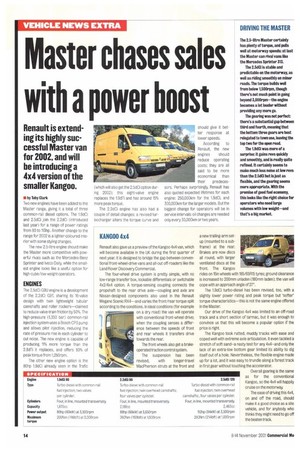DRIVING THE MASTER
Page 14

If you've noticed an error in this article please click here to report it so we can fix it.
The 2.5-litre Master certainly has plenty of torque, and pulls well at motorway speeds: at last the Master can rival vans like the Mercedes Sprinter 313.
The 2.5d01 is stable and predictable on the motorway, as well as riding smoothly on minor roads. The torque builds well from below 1,500rpm. though there's not much point in going beyond 3,000rpm—the engine becomes a lot louder without providing any more go.
The gearing was not perfect: there's a substantial gap between third and fourth, meaning that the bottom three gears are best relegated to town use, leaving the top two for the open road.
The 1.9dCi was more of a surprise: it gains revs quickly and smoothly, and is really quite refined. It certainly seems to make much less noise at low revs than the 2.5dCi but is just as flexible, and the gearing seems more appropriate. With the promise of good fuel economy, this looks like the right choice for operators who need large volumes with low weight—and that's a big market.












































































































































